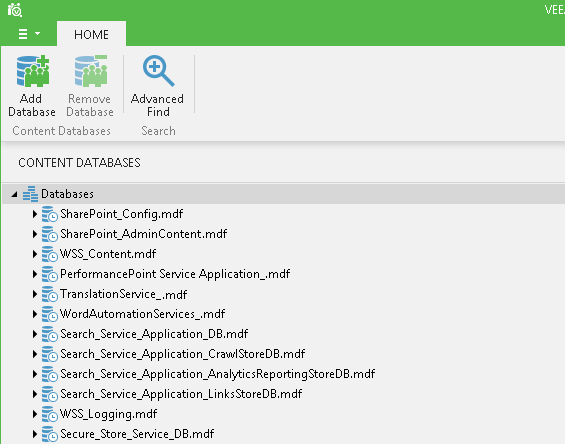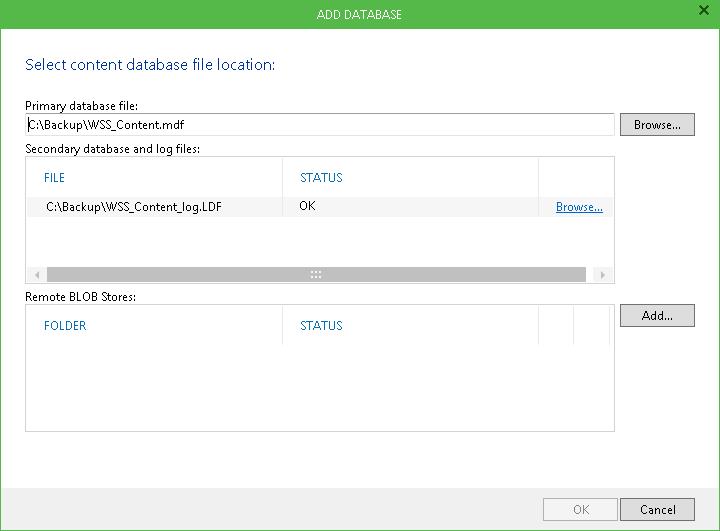To be able to browse and restore SharePoint items, Microsoft SharePoint content database should be added to the Veeam Explorer scope. This operation is performed automatically, Veeam Explorer mounts the VM file system to the mount server and then attaches the database to the staging Microsoft SQL server, creating a temporary Microsoft SharePoint content database from which you can recover the necessary items. For example, when using Microsoft SharePoint Item Restore Wizard to perform the restore, the content database will be added to Veeam Explorer scope automatically.
If the server VM was hosting several content databases, and you backed up that server with application-aware processing disabled and then started application item-level restore for it, these databases will appear in the hierarchy having a clock icon near them. This indicator shows that information about these databases was retrieved from the VM file system during the mounting process (no SQL engine-related operations like database attach were involved at this stage), and database will be attached to the staging server later on.
Actually, attach will be performed after you initiate this operation by selecting the certain database for browsing (clicking on the arrow next to it) or search purposes (entering search parameters in the search field). Veeam Explorer will report on attach operation progress in the pop-up window; clock icon for the corresponding database will no longer appear.
|
This approach was introduced in version 9.5 of Veeam solution to optimize the performance. |
Adding Databases Manually
In case you have used Microsoft SharePoint Item Restore Wizard to perform the restore, the content database will be added to Veeam Explorer scope automatically and become available for browsing. Alternatively, you can add the required database to Veeam Explorer scope manually. In this case, you will need to configure staging SQL Server settings as described in the Performing Initial Configuration section.
|
To successfully attach the database to the staging SQL server, ensure that SQL server service account has sufficient rights to access the database files. Otherwise, you will get the following error message displayed: "SQL server cannot access sharepoint database file. SQL Server account: <service_account>". Provide the access rights to the specified account. |
To add a database file to the Veeam Explorer scope manually and make it visible in the console, do the following:
- Open Veeam Explorer for Microsoft SharePoint and click Add Database on the toolbar.
- In the displayed window, specify the location of the Microsoft SharePoint primary content database file (.mdf); corresponding secondary database and transaction log file (.ldf) will be also added. If necessary, you can also add the remote BLOB (binary large objects) stores (RBS).
- Click OK and wait for the operation to complete. Database hierarchy will be displayed in the navigation tree of the Veeam Explorer window. Now you can view its content and carry out the actions you need (search, export, restore and so on).
|
|
Removing a Database
To remove a content database from the Veeam Explorer scope:
- Select the database in the navigation tree.
- Click Remove Database on the toolbar. The database will be removed from the Veeam Explorer scope, no longer shown in the console, automatically detached from the staging SQL server and unmounted from the mount point.
After you add one or several Microsoft SharePoint content databases to the Veeam Explorer scope, you can browse through the contents of these database(s), find and restore necessary Microsoft SharePoint items.
|
The same operations (detach and unmount) will be performed if you finish the restore session by closing Veeam Explorer. |









